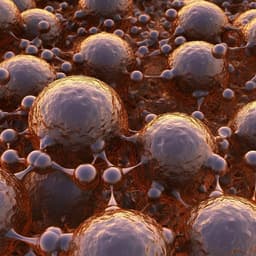Introduction
Fiber lasers are highly desirable due to their compactness, stability, and efficiency. Mid-infrared (MIR) fiber lasers, in particular, are valuable for applications in medicine, industry, communication, and defense. Rare-earth-doped fiber lasers have been used for MIR generation, but silica fibers suffer high transmission losses in the MIR due to phonon energy. Soft glass fibers with lower phonon energy have been employed, but limitations remain, particularly beyond 4 µm. Chalcogenide fibers offer lower phonon energy, enabling longer wavelengths, but challenges include material toxicity, poor fiberizability, low rare-earth solubility, quenching effects, and low robustness. Hollow-core fibers (HCFs) offer a promising alternative. They maintain the robustness of silica fibers while minimizing material-light interaction due to the small core size, thus reducing losses. HCF gas lasers (HCFGLs) have shown efficient operation in the MIR range, but extending wavelengths beyond 4 µm remains challenging. While gases like CO2 and HBr have been used, CO offers potential for even longer wavelengths (2.5–8.2 µm). This study aims to develop a CO-filled silica-based HCF laser operating at a wavelength exceeding 4 µm, overcoming the limitations of previous approaches.
Literature Review
Extensive research exists on rare-earth-doped fiber lasers for MIR generation, with various advancements reported in the literature (references 6-15). However, limitations in silica and soft glass fibers have driven exploration of chalcogenide fibers (references 19-21) and HCFs (references 23-25). Previous work using HCFGLs demonstrated efficient operation from 2.68 to 3.5 µm and even exceeding 4 µm using stimulated Raman scattering (SRS) of hydrogen (reference 38). However, SRS requires complex, costly pulsed pump sources. Population inversion in gases such as CO2 and HBr has enabled higher power and wider tuning in the 4 µm range (references 37, 39). A 4.6-µm N2O-filled HCFGL was reported in 2019 (reference 36), representing the longest wavelength in silica-based fiber lasers until this work. CO gas offers the potential to generate even longer wavelengths, but its implementation in fiber lasers has been limited by high silica loss at these wavelengths.
Methodology
This study used a broadband, low-loss silica-based HCF manufactured in-house. The HCF was fabricated using the stack-and-draw technique, resulting in eight non-touching single-ring tubes surrounding a 107 µm air core and a 900 nm thick capillary. The capillary thickness was chosen to place the CO absorption and emission bands within the low-loss region of the HCF, as predicted by the anti-resonant reflecting optical waveguide model. The HCF loss was characterized using the cutback method, revealing an average loss of 0.04 dB/m in the 2.23–2.6 µm range and approximately 0.73 dB/m at 4644 nm and 1.81 dB/m at 4824 nm, significantly lower than bulk silica loss at these wavelengths. Finite element analysis was used to simulate HCF loss, considering leakage loss and material absorption. A 2.33-µm Tm³⁺-doped fiber amplifier, operating in a two-stage backward pumping configuration with 793-nm laser diodes, was used as the pump source for the CO HCFGL. The pump wavelength was selected to match the V=0 to V=2 vibrational absorption line of CO. The energy level transitions of the CO molecule were analyzed, showing absorption and emission in the 2.3 µm and 4.5–5 µm regions respectively. The choice of the R-branch absorption line for pumping maximizes absorption efficiency.
Key Findings
The researchers successfully demonstrated a 4.8-µm CO-filled silica-based HCF laser, representing the longest wavelength achieved to date for a silica-based fiber laser. This was enabled by the development of a broadband, low-loss HCF with a measured loss of 1.81 dB/m at 4.8 µm. The laser achieved a maximum MIR output power of 46 mW and a tuning range of 180 nm (4644–4824 nm) by adjusting the pump laser. The HCF exhibited remarkably low losses (0.04 dB/m on average) in the pump wavelength region (2.23–2.6 µm) and considerably lower losses than bulk silica in the MIR emission range. The mode field diameter of the HCF was around 80 µm across the relevant wavelength range, facilitating efficient interaction between the pump light and CO molecules. The 2.33-µm Tm³⁺-doped fiber pump laser provided a narrow linewidth pump suitable for the vibrational transition of CO molecules, maximizing the efficiency of population inversion and lasing.
Discussion
The successful demonstration of a 4.8-µm CO-filled silica-based HCF laser addresses a significant challenge in MIR fiber laser technology. The use of HCF and the optimized pump source enabled lasing at a wavelength where bulk silica exhibits extremely high losses (13,000 dB/m at 4.8 µm). The results highlight the potential of HCFGLs for generating high-power, tunable MIR radiation at wavelengths inaccessible with traditional rare-earth-doped fiber lasers. This advancement opens new possibilities for applications requiring high-power and broadly tunable MIR sources, such as spectroscopy, sensing, and medical imaging. The relatively low losses of the HCF in the pump and emission regions contribute to the high efficiency of the laser. The findings suggest that further wavelength expansion could be achieved by changing the pump absorption line and optimizing the laser structure.
Conclusion
This work successfully demonstrated a 4.8-µm CO-filled silica-based HCF laser, achieving the longest wavelength to date for silica-based fiber lasers. The use of a low-loss HCF and a narrow-linewidth 2.33 µm pump laser enabled high output power (46 mW) and a broad tuning range (180 nm). This represents a significant step towards practical, high-performance MIR fiber laser sources. Future research could focus on further optimization of the HCF design to reduce losses at even longer wavelengths, exploring other gas molecules for wavelength expansion, and improving the stability and efficiency of the laser system.
Limitations
The current study focused on achieving the longest wavelength in silica-based fiber lasers. Further investigation is needed to optimize other laser parameters such as output power and stability. While the HCF design was optimized for the targeted wavelengths, there is always room for improvement. Detailed characterization of the laser emission linewidth would further enhance the understanding of the laser characteristics and its potential applications.
Related Publications
Explore these studies to deepen your understanding of the subject.






